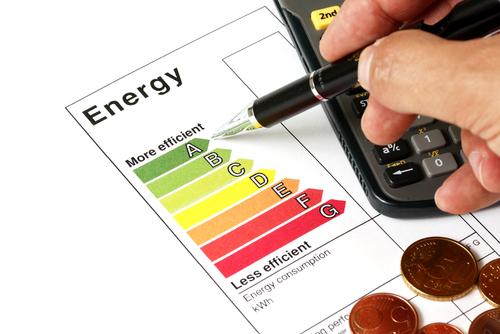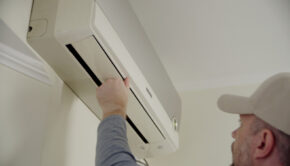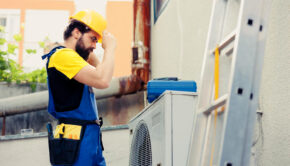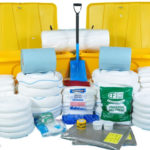How can your HVAC system run at maximum efficiency
The average American’s home-energy consumption is the culprit of two times the amount of greenhouse gas emissions as the average family car. The same household racks up more than $2,200 in annual energy bills, with heating and cooling contributing to nearly half of that expense. Improving the efficiency of your home’s heating and cooling systems can save you money and improve the comfort of your home, all while shrinking your carbon footprint.
According to ENERGY STAR — a division of the U.S. Environmental Protection Agency that sets standards for home energy efficiency — your HVAC system probably isn’t running at maximum efficiency if you are experiencing any of the following:
- Varying temperatures throughout your home, with some rooms too hot and some too cold
- Issues with humidity or excessive dust
- Your system needs frequent repairs and your energy bill (consumption) is increasing
- Your system is older than 10 years
You can help your HVAC system run at maximum efficiency by paying attention to all factors contributing to the system’s functions. Think your system could use a boost? Make sure you:
Insulate
Heating and cooling a well-insulated home puts less strain on your HVAC system, improving its lifespan and reducing the amount of energy it eats up, and that goes for ducts, too. Leaky ducts displace an average of 20-40% of treated air before it even enters the rooms in your home and can waste up to 45% of your monthly energy bill. A professional can inspect ducts for leaks, holes, or poor connectivity that waste energy. Ducts in attics, crawlspaces, and basements are often accessible and can be improved with mastic sealant or metal foil tape. Despite its name, duct tape is not a good option for sealing ducts because it lacks longevity. A contractor can check connections at vents and registers to ensure they are well-connected and sealed at the floor, wall, or ceiling, as disconnected or leaky ductwork is commonly found along air vents. When the job is done, a contractor can use diagnostic tools to ensure no additional repairs are necessary.
Reinforcing insulation in places where ducts are not accessible is second-best to mending gaps, while ensuring your home’s insulation as a whole is secure means less energy will be lost through thermal bridging (or air passing through poorly insulated sections of wall, ceiling, floor, or roof). Common culprits of weak insulation are exterior doors, windows, and attics. If your front door expands and contracts with the weather, you likely have gaps between the jamb and the door that leak air. Replacing an aging wooden door with a fiberglass model will seal gaps and strengthen overall home insulation. Attics are big-league offenders when it comes to home energy waste, especially in older homes. Enforcing existing attic insulation will increase its R-value and put less strain on a home’s heating and cooling systems. Bonus: Fiberglass attic insulation and front door replacement both topped Remodel Magazine’s list of this year’s home improvement projects with the best ROI.
Bring in the Professionals (Get the Right Fit)
The standards put on today’s new home construction are creating homes with higher energy efficiency, yet HVAC systems are often still fitted for homes of the past. An HVAC system that isn’t the right size for your home is an absolute energy-suck. Furnaces and air conditioning units that are too big for your home use more energy than needed for the space, while smaller machines in homes that require a larger HVAC system are over-worked, creating new problems associated with inefficiency.
Consulting a contractor is your best bet to making sure you’re getting the most out of your HVAC system. A contractor will do an on-site evaluation of your old system and produce a measurement based on BTUs. Everything from window insulation to home size contributes to what size system is right for your home. Your contractor will recommend which new system is best for your space and existing set-up and the good ones will suggest which ones can earn you money back through tax incentives and energy rebates (some will even fill out the paperwork for you). When weighing your options, look for the yellow “Energy Guide” label that shows the system’s AFUE number. Annual Fuel Utilization Efficiency (AFUE) is the standard measurement that determines how efficient a furnace is when converting fuel to heat energy. The higher the AFUE, the more efficient the system.
Keep-up with Maintenance
Dirt and neglect are the leading causes of inefficiency and failure in HVAC systems. Routine maintenance keeps dirt and dust out of your system (and out of your air). Change your HVAC system’s air filter regularly. A clean filter prevents build-up within the system and therefore prevents expensive repairs or premature failure. Check the filter monthly, especially during peak winter and summer months when your system is working the hardest.
As a rule of thumb, change your filter at least every three months and sooner if it’s showing signs of wear. Like filter changes, regular duct cleaning keeps allergens out of your air and harmful dirt out of your system. Annual duct cleanings are particularly important in homes with pets and in older homes that were previously heated with coal or oil furnaces.
Schedule a time for your qualified technician to assess your system twice every year. To avoid any complications during the hottest or coldest months, book a routine check-up for your cooling system in the spring and heating system in the fall. A technician will inspect your system for electrical errors, drainage malfunctions, lubrication, and leaks. Keeping moving parts lubricated is important to overall system efficiency and a gas leak can be detrimental. Install a carbon monoxide detector next to your furnace as a first line of defense in detecting a leak.
Use Smart Thermostat Settings
Using a programmable thermostat allows you to curb your home’s energy consumption while you’re away. By setting your home to a more moderate temperature while you’re at work or sleeping, you’re putting less strain on your system and cutting wasted energy costs. Install all thermostats on interior walls and away from heating or cooling registers, appliances, lighting, doors, and windows.















